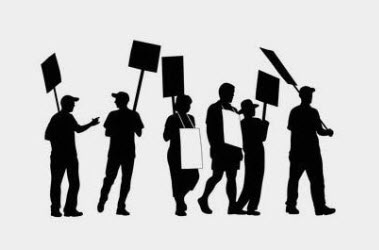Introduction
Union and Informational picketing is a form of non-strike activity that allows unions and their members to express their views on working conditions and other issues. The National Labor Relations Board (NLRB) has set standards for informational picketing that must be followed. Under these standards, a union may engage in informational picketing at two locations outside your business: on public property or on your own property if you agree to it. If the picketing takes place on public property, the union must comply with all applicable federal, state and local laws and regulations.
For example:
Under the National Labor Relations Board (NLRB) standards a nonstriking union may engage in informational picketing at two locations.
Given that informational picketing is allowed, where can a nonstriking union engage in such activity?
Under the National Labor Relations Board (NLRB) standards, a nonstriking union may engage in informational picketing at two locations:
- Outside the employer’s premises where employees are normally assigned to work; and/or
- On public property that does not abut or adjoin any of these premises.
However, the NLRB has stated that a union cannot engage in informational picketing if it is likely to cause confusion as to which employees are striking and which are not. The union must also avoid picketing locations where it knows its members will be working.
An informational picket must be held on public property:
In order to hold an informational picket on private property, the union must first obtain permission from the property owner. If you are organizing a public demonstration, such as a rally or march, it is best practice to notify local law enforcement officials of your plans before you begin picketing. The employer may not discriminate against the union by refusing to allow them onto its premises for this purpose and should not restrict the number of pickets nor restrict their access to all entrances or exits during normal business hours (usually 8:00am-5pm).
The employer also cannot prevent anyone from handing out flyers at work unless they say that it is because he/she believes those flyers could cause “disruptions” in his/her business operations; however, workers can still hand out leaflets inside their own workplace if management does not tell them otherwise. Additionally, employers may restrict how long and where unions can protest outside their businesses during non-work hours by posting signs stating these rules prominently outside each door leading into their building or facility.
If the picketing is on public property, the union must comply with all applicable laws and regulations.
If the picketing is on public property, the union must comply with all applicable federal, state and local laws and regulations.
Picketing on public property is allowed as long as it complies with these rules:
- The union must have a permit to picket. The gathering must be peaceful and not interfere with others’ use of public space.
- No person may be forced by pressure or threats of violence to participate in an unlawful strike or boycott under the National Labor Relations Act (NLRA) — which means that employers can’t force employees to cross a picket line if they don’t wish to do so.
The union must maintain control over its own members and those accompanying them:
The union must maintain control over its own members and those accompanying them, keeping noise levels down and avoiding any encouragement of violence or other illegal activities. This means:
- The union should have enough picketers to fill the sidewalk or street without impeding pedestrian traffic. If it is necessary to use more than one location, each should be at least 50 feet apart so that pedestrians can easily pass between them.
- Make sure that people are not blocking the entrance or exit of any business.
- Make sure that there is no violence on either side.
Informational picketing is a legal way for workers to let the public know about their dispute with an employer over wages, benefits or working conditions
The area immediately around the entrance to your facility must remain clear.
- The area immediately around the entrance to your facility must remain clear. This includes parking lots, sidewalks and public rights-of-way.
- You may not interfere with access to or egress from your business, including driveways and entrances.
- No picketers shall be within 50 feet of any other picket line at the same location.
Informational picketing may not interfere with access to or egress from your facility.
- Informational picketing means that the picketers keep their distance from your business, and do not interfere with access to or egress from your facility.
- The noise level of the picket must not exceed a certain decibel level. This can be calculated by taking an average of the noise levels during each hour of a shift and then multiplying that figure by the number of hours worked each day (12).
- Picketers are also not allowed to encourage violence or other illegal activities.
You have rights dealing with informational picketing, just make sure you know your rights
- The union must maintain control over its own members and those accompanying them, keeping noise levels down and avoiding any encouragement of violence or other illegal activities.
- The area immediately around the entrance to your facility must remain clear.
Conclusion
In conclusion, it is not easy dealing with informational picketing. It can be disruptive and annoying, but there are some steps you can take to limit the impact of this type of protest. We hope this article has been helpful in understanding your rights as an employer or business owner when faced with union activity. If you wish to learn more about
Union Strikes, we have written an article that will help provide you additional information.
Follow this link.











